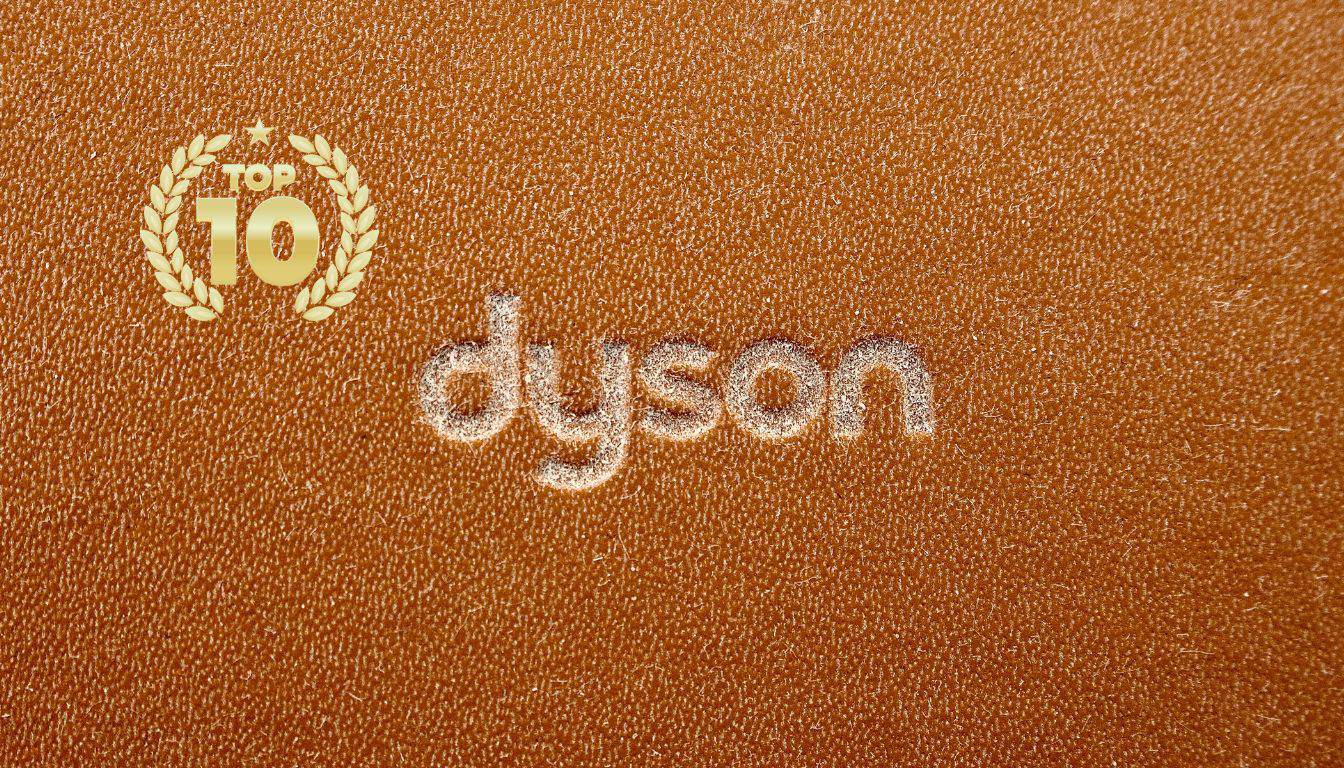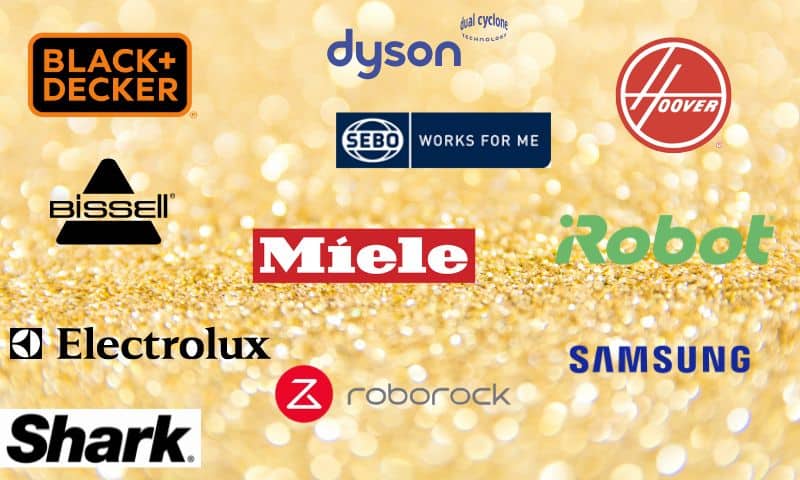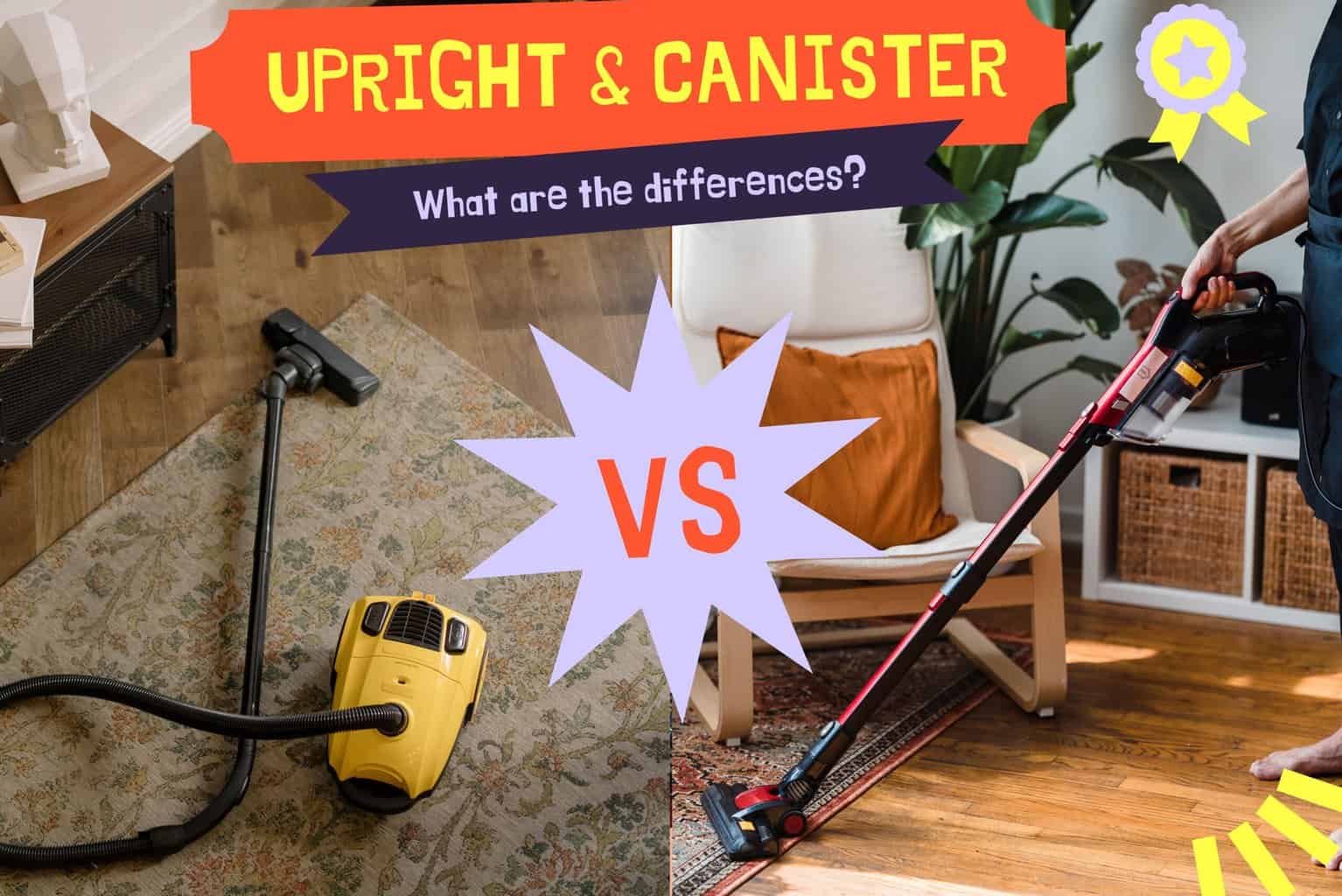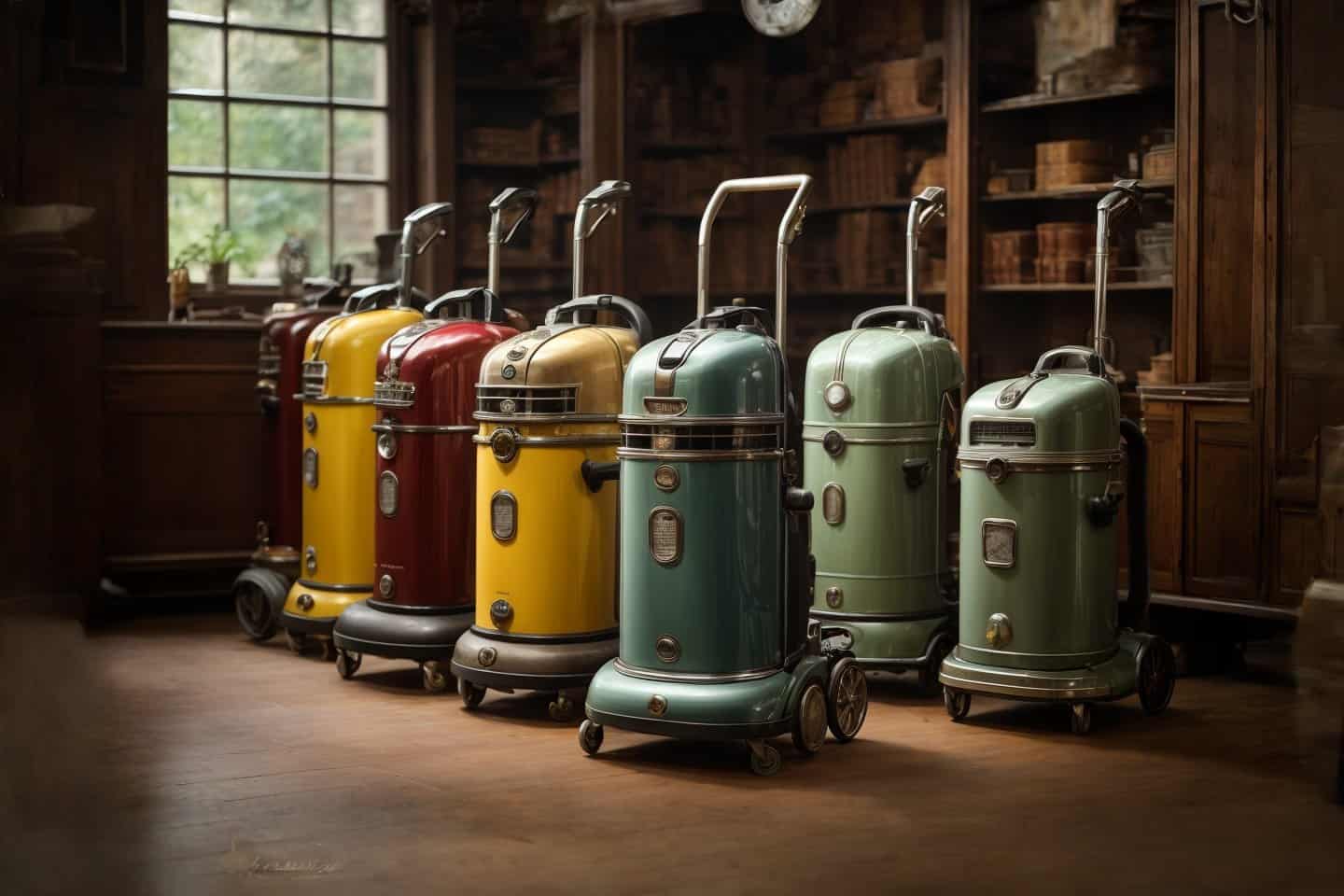
Vacuum cleaners have revolutionized household cleaning, evolving from simple carpet sweepers to advanced robotic devices. These appliances have become an essential part of our lives, making the daunting task of vacuuming much easier and efficient.
The journey of vacuum cleaners began with the invention of the electric suction sweeper in the late 19th century. This early version paved the way for the development of upright vacuum cleaners, which gained popularity due to their convenience and effectiveness in removing dirt and debris from carpets. Over time, advancements in technology led to the creation of robotic vacuum cleaners, offering automated cleaning solutions that can navigate through rooms independently.
Understanding the history of vacuum cleaners allows us to appreciate how far they’ve come and how they have transformed our cleaning routines.
Hubert Cecil Booth: The Visionary Inventor
Hubert Cecil Booth is widely recognized as the ingenious inventor behind the first powered vacuum cleaner. His groundbreaking creation revolutionized the way we clean our homes and paved the way for future advancements in vacuum cleaner technology.
Booth’s inspiration struck when he attended a local fair and witnessed a demonstration of a device that used air suction to remove dust from seats. Intrigued by this concept, he set out to develop his own contraption that could effectively clean large areas using suction power instead of traditional brushes and brooms.
In 1901, Booth patented his invention, which he called the “Puffing Billy.” This early version of the vacuum cleaner consisted of a sizeable gasoline-powered engine connected to a series of pipes and hoses. As the air was drawn into the machine, it created a powerful suction force that could suck up dirt and debris from carpets and floors.
One of the critical advantages of Booth’s invention was its ability to clean more efficiently than manual methods. Prior to his invention, cleaning involved labor-intensive tasks such as sweeping, beating rugs, or even hanging them outside for thorough dust removal. With his powered vacuum cleaner, Booth simplified and expedited the cleaning process significantly.
Booth’s invention quickly gained popularity, leading him to establish his own company called “The Vacuum Cleaner Company” in 1903. Based in London, this company manufactured and sold its innovative machines to eager customers who were thrilled with their newfound convenience.
The success of Booth’s invention extended beyond just residential use. It found applications in various industries, such as hotels, restaurants, and even factories where cleanliness was essential. The efficiency and effectiveness of the powered vacuum cleaner made it an indispensable tool for maintaining hygiene in both domestic and commercial settings.
Booth’s pioneering work laid the foundation for subsequent advancements in vacuum cleaner technology. His invention sparked further innovation among other inventors who sought to refine and improve upon his design. Over time, vacuum cleaners became more compact, portable, and user-friendly, making them a staple in households worldwide.
Today, we can find an array of vacuum cleaner models with advanced features such as cordless operation, HEPA filters for allergen removal, and even robotic vacuums that autonomously navigate and clean our homes. These modern-day marvels owe their existence to the visionary thinking of Hubert Cecil Booth.
Timeline of Vacuum Cleaner Innovations
The timeline of vacuum cleaner innovations spans several decades, with various inventors contributing to improving and refining early designs. Let’s take a closer look at the critical milestones that have shaped the evolution of vacuum cleaners.
The evolution of vacuum cleaners is a captivating tale of human ingenuity, reflecting our relentless pursuit of convenience and efficiency. This timeline chronicles the milestones that have shaped the world of vacuum cleaning.
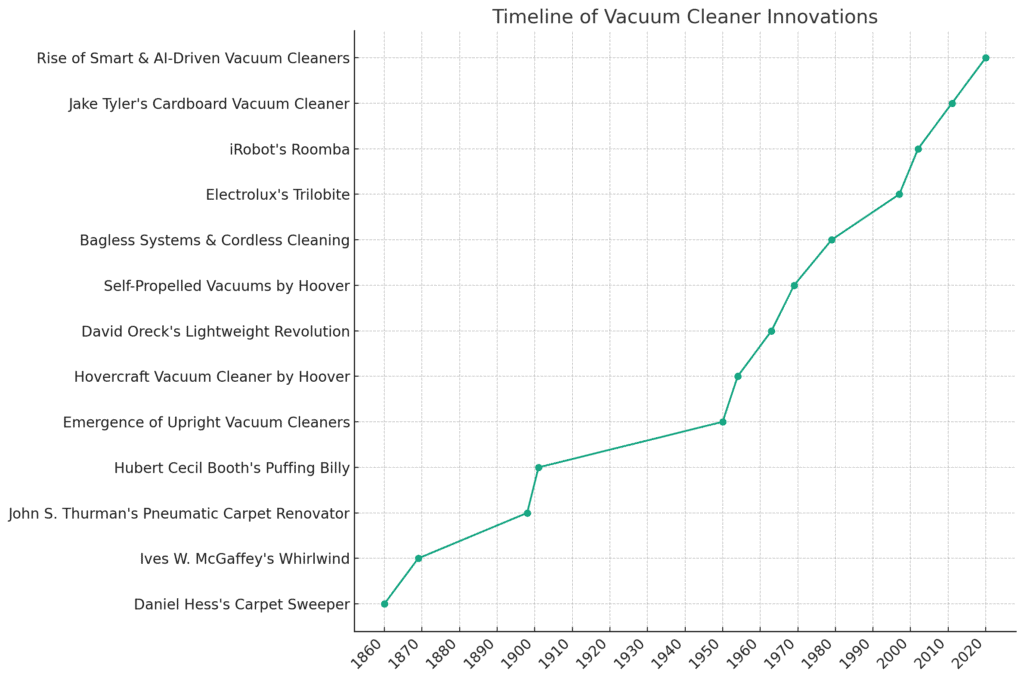
Early Beginnings (1860-1899)
The concept of vacuum cleaning began in the mid-19th century. In 1860, Daniel Hess introduced a rudimentary carpet sweeper using rotating brushes, a precursor to modern designs. Ives W. McGaffey furthered this innovation in 1869 with the “Whirlwind,” a hand-operated cleaner that was a marvel for its time. By 1898, John S. Thurman was pioneering with his gasoline-powered “pneumatic carpet renovator,” which used air to dislodge dust, hinting at the suction-based designs of the future.
Portable Models: Cleaning on the Go (1901)
The dawn of the 20th century heralded a significant shift with Hubert Cecil Booth’s invention. His “Puffing Billy,” introduced in 1901, was a game-changer. This compact, wheel-mounted device utilized air pressure for suction, liberating homeowners from the constraints of bulky machines and external help. Booth’s innovation marked the beginning of a new era in household cleaning, emphasizing autonomy and convenience.
Upright Vacuum Cleaners Emerge (1950)
The 1950s were characterized by the rise of upright vacuum cleaners. These designs, with their vertical orientation, direct suction, and user-friendly storage, quickly became a staple in households worldwide, setting the standard for decades to come.
Hovercraft Vacuum Cleaner by Hoover (1954)
In 1954, Hoover unveiled a groundbreaking design: the hovercraft vacuum cleaner. This avant-garde model, designed to glide on a cushion of air, redefined maneuverability, allowing users to navigate their homes with unprecedented ease.
David Oreck’s Lightweight Revolution (1963)
Recognizing a niche yet crucial need, David Oreck, in 1963, introduced lightweight industrial-strength upright vacuum cleaners. These machines, while powerful, were designed for ease of use, bridging the gap between commercial-grade efficiency and household convenience.
Self-Propelled Vacuums by Hoover (1969)
Hoover, a name synonymous with vacuum innovations, launched self-propelled vacuum cleaners in 1969. These models, equipped with drive systems, minimized the physical effort of cleaning, making the task more accessible to a broader audience.
Bagless Systems & Cordless Cleaning (1979)
The late 1970s were transformative. James Dyson’s 1979 bagless cyclone system introduced centrifugal force to separate dust, eliminating disposable bags. Simultaneously, Black & Decker ventured into cordless vacuum cleaners, offering users unparalleled freedom from power outlets.
Robotic Cleaners: Automation in Cleaning (1997-2002)
The turn of the millennium saw automation take center stage. Electrolux’s Trilobite in 1997 was a precursor, but iRobot’s Roomba in 2002, with its AI capabilities, indeed popularized robotic vacuum cleaning.
Eco-Friendly & Sustainable Designs (2011)
In a nod to sustainability, 2011 witnessed Jake Tyler’s innovative cardboard vacuum cleaner. This design emphasized the industry’s potential for eco-friendly innovations.
Smart & AI-Driven Vacuum Cleaners (2010s-2020s)
The last two decades have been characterized by the rise of smart vacuum cleaners. Integrated with apps, AI capabilities, and smart home systems, these devices have redefined cleaning, offering remote control, scheduling, and real-time feedback.
The timeline of vacuum cleaner innovations showcases how these household appliances have evolved over time to meet the needs of users. From manual sweepers to AI-driven marvels, the journey of vacuum cleaners mirrors our societal advancements, each innovation making our lives a tad bit easier.
Horse-Drawn to Modern-Day Models
The history of vacuum cleaners is an exciting journey from the large, horse-drawn machines of the past to the compact and efficient models we use today. Let’s take a closer look at how these cleaning devices have evolved over time.
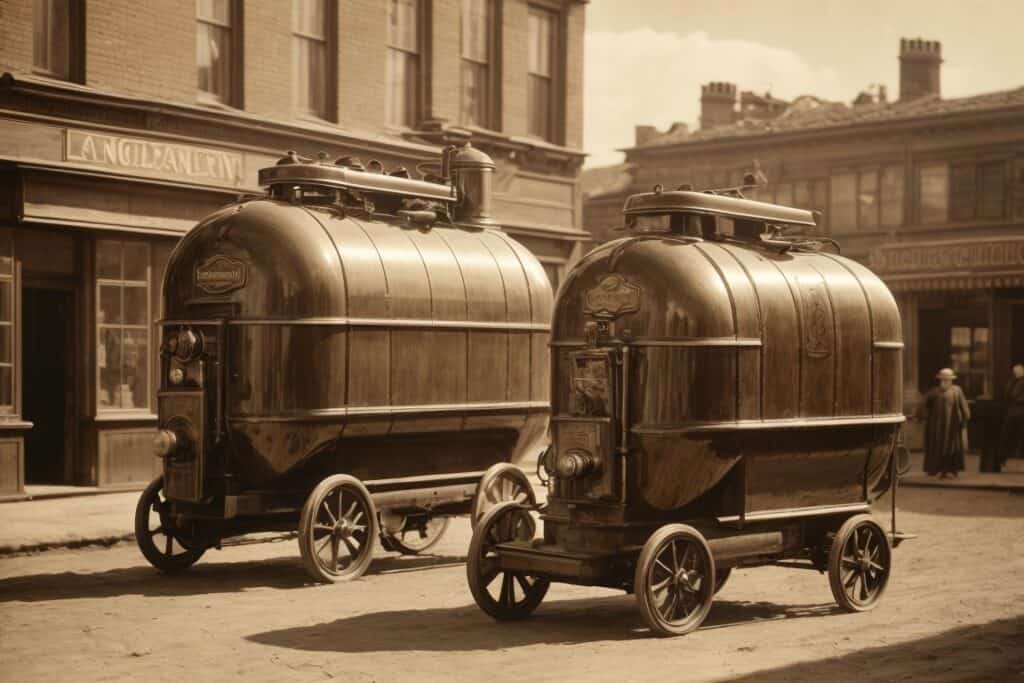
Early Vacuum Cleaners: Large and Horse-Drawn
In the early days, vacuum cleaners were far from what we know them today. They were massive machines that required teams of workers to operate them. These horse-drawn models relied on manpower to create suction for cleaning purposes. Imagine a group of people pulling a gadget around your house to get it clean! These early vacuum cleaners were definitely not the most convenient or efficient option available.
Transition to Electric-Powered Models
The transition from horse-drawn models to electric-powered ones marked a significant shift in technology. With the invention of the electric motor, vacuum cleaners became more practical and user-friendly. The introduction of electric power meant that individuals could now clean their homes without relying on horses or manual labor.
Modern-Day Vacuum Cleaner Designs
Today’s vacuum cleaner designs have come a long way since those early days. They are now compact, lightweight, and designed for easy maneuverability. The development of wheels made it easier for users to move their vacuums around without much effort. Advancements in technology have led to sleeker designs that are aesthetically pleasing while still being functional.
Powerful and Efficient Cleaning
Advances in technology have made today’s vacuums more powerful and efficient than ever before. The internal combustion engine revolutionized the way vacuums functioned by providing a reliable source of power. This allowed for increased suction capabilities, enabling deeper and more thorough cleaning.
Bagged vs. Bagless Systems
One notable innovation in modern-day vacuum cleaners is the introduction of bagless systems. Instead of using disposable bags to collect dirt and debris, bagless models utilize a container or canister that can be emptied and reused. This not only reduces waste but also saves money in the long run.
However, bagged systems still have their advantages. They tend to be more hygienic as the dirt and dust are sealed within the bag, preventing it from being released back into the air during disposal. Bagged models often have larger capacities, meaning less frequent emptying.
The Evolution of Vacuum Cleaner Accessories
Vacuum cleaner accessories have also evolved over time to enhance their cleaning capabilities. Hoses and attachments allow users to reach tight spaces and clean various surfaces with ease. From crevice tools for narrow gaps to upholstery brushes for furniture, these accessories make vacuuming more efficient and effective.
The Impact of James Spangler

When discussing the history of vacuum cleaners, it is impossible not to mention James Spangler. In 1907, Spangler, a janitor in Ohio, invented an electric-powered suction sweeper that laid the foundation for modern-day vacuums. His design featured a motor-driven fan that created an airstream, pulling dirt into a soap box where it was trapped by a pillowcase-like filter.
Spangler’s invention caught the attention of William Hoover, who recognized its potential and purchased the patent rights. Hoover then went on to establish one of the most iconic vacuum cleaner brands in history – Hoover Company.
Power and Performance: Understanding Output Power
To truly understand the power and performance of a vacuum cleaner, it’s essential to grasp the concept of output power. Output power refers to the suction strength or airflow produced by a vacuum cleaner. This is measured in units such as watts or air watts (AW), which indicate the electrical power consumed by the motor.
Higher output power generally indicates better cleaning performance on different surfaces. A vacuum cleaner with greater suction power will be more effective at removing dirt, dust, and debris from floors, carpets, and upholstery. It can tackle stubborn pet hair, crumbs, and other messes with ease.
The output power of a vacuum cleaner plays a crucial role in its ability to effectively clean various surfaces. Whether you’re dealing with hardwood floors, thick carpets, or delicate rugs, having sufficient suction power ensures that no dirt or debris is left behind.
There are two standard units used: watts and air watts (AW). Watts refers to the electrical power consumed by the motor. On the other hand, air watts (AW) take into account both the electrical power consumption and how efficiently that energy is converted into suction.
While wattage provides a general idea of a vacuum cleaner’s capability, air watts give a more accurate representation of its actual cleaning performance. A higher number of air watts typically translates to more potent suction and better overall cleaning results.
It’s worth noting that while high output power is desirable for efficient cleaning performance, it may also lead to increased noise levels during operation. Powerful motors tend to generate more noise as they work harder to produce strong suction. However, advancements in technology have allowed manufacturers to develop quieter models without compromising on cleaning effectiveness.
In addition to considering output power when choosing a vacuum cleaner model, it’s essential to evaluate other factors such as brush roll design, filtration system efficiency, and maneuverability features like swivel steering and adjustable height settings. These elements work in conjunction with output power to ensure optimal cleaning performance.
Impact on Household Cleaning Practices
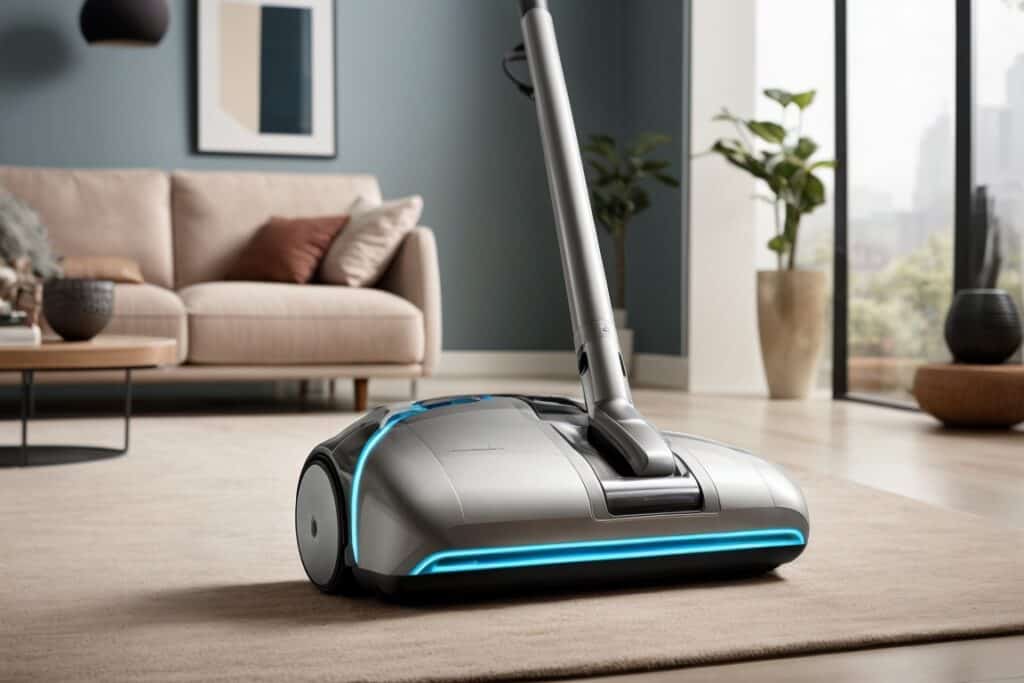
Vacuum cleaners have revolutionized household cleaning practices, making them more efficient and convenient than ever before. Gone are the days when cleaning involved labor-intensive tasks like manual sweeping with brooms. With the advent of vacuum cleaners, cleaning large areas became a breeze, significantly reducing both the time and effort required.
Before vacuum cleaners came into existence, keeping homes spick and span was a daunting task. Imagine having to sweep every nook and cranny of your house manually! It would take hours of backbreaking work just to ensure that your floors were free from dirt and dust. But thanks to the invention of vacuum cleaners, this arduous chore has become much more straightforward.
One of the most significant advantages that vacuum cleaners bring to household cleaning is their ability to cover large areas efficiently. With a vacuum cleaner in hand, you can swiftly move from room to room without breaking a sweat. The powerful suction capabilities of modern carpet cleaners ensure that even the tiniest particles are sucked up from deep within carpets and rugs, leaving your floors spotless.
Not only do vacuum cleaners save time and effort, but they also contribute to improved indoor air quality. Traditional sweeping methods often kicked up dust particles into the air, leading to respiratory issues for those with allergies or asthma. Vacuum cleaners effectively capture these particles using filters, preventing them from circulating back into your home’s atmosphere.
Furthermore, modern vacuum cleaners come equipped with advanced features such as HEPA filters (High-Efficiency Particulate Air) that trap even the smallest allergens like pet dander or pollen. This is especially beneficial for people with allergies or sensitivities as it helps maintain cleaner and healthier indoor air quality.
Another notable impact of vacuum cleaners on household cleaning practices is their versatility. These machines are not limited to carpets; they can be used on various surfaces such as hardwood floors, tiles, upholstery, and even car interiors. This flexibility makes vacuum cleaners an indispensable tool for maintaining cleanliness throughout your home.
Moreover, the invention of cordless vacuum cleaners has taken convenience to a whole new level. No longer do you have to worry about tripping over cords or being confined to a limited range of movement. Cordless vacuum cleaners provide the freedom to clean any corner of your home without restrictions, making the cleaning process even more hassle-free.
In addition to their practicality and efficiency, vacuum cleaners have also evolved in terms of design and aesthetics. Manufacturers now offer sleek and stylish models that not only perform exceptionally well but also add a touch of modernity to your home. With various colors and designs available, you can choose a vacuum cleaner that complements your interior décor.
To sum it up, the impact of vacuum cleaners on household cleaning practices cannot be overstated. These machines have transformed cleaning from a labor-intensive task into a convenient and efficient process. They save time and effort while improving indoor air quality. With their versatility and sleek designs, vacuum cleaners have become an essential tool in every home.
Handheld Vacuums: Peak Horsepower and Input Power
Handheld vacuums have become popular choices for quick cleanups due to their compact and portable design. These handy devices are perfect for tackling small messes or reaching tight spaces that more giant vacuum cleaners may struggle with. Two essential factors to consider are peak horsepower and input power.
Peak Horsepower: Maximum Power Output
Peak horsepower refers to the maximum power output of a handheld vacuum cleaner. It indicates how much suction power the device can generate at its highest level. The higher the peak horsepower, the more effective the vacuum will be in picking up dirt, dust, and debris.
One advantage of handheld vacuums is that they often have smaller motors compared to their larger counterparts. This means they generally have lower peak horsepower ratings. However, this doesn’t necessarily mean they are less efficient. Since handheld vacuums are designed for smaller cleaning tasks, a lower peak horsepower rating may still be sufficient for their intended purposes.
Input Power: Electricity Consumption
Input power is another crucial factor to consider when choosing a handheld vacuum cleaner. It refers to the amount of electricity consumed by the device during operation. Understanding the input power helps determine how energy-efficient a handheld vacuum is and how long it can run on a single charge or battery cycle.
Handheld vacuums typically have lower input power compared to upright or canister models since they are designed for shorter cleaning sessions. This makes them more energy-efficient and suitable for quick cleanups without draining excessive amounts of power.
When comparing different handheld vacuums based on input power, it’s essential to consider both corded and cordless options. Corded models usually have higher input power as they directly draw electricity from an outlet while being used. On the other hand, cordless models rely on batteries, which may provide slightly lower input power but offer greater flexibility and portability.
Choosing the Right-Handheld Vacuum
Understanding peak horsepower and input power is crucial in selecting the right handheld vacuum for your specific needs. Here are a few tips to help you make an informed decision:
- Consider the size of the cleaning tasks: If you primarily need a handheld vacuum for small messes or quick touch-ups, a lower peak horsepower rating may be sufficient. However, if you anticipate tackling larger debris or more significant cleaning tasks, opting for a higher peak horsepower can ensure better performance.
- Evaluate energy efficiency: If you’re concerned about energy consumption or prefer longer battery life, consider choosing a handheld vacuum with lower input power. Cordless models with rechargeable batteries can offer convenience while still providing adequate suction power.
- Assess additional features: Alongside peak horsepower and input power, consider other features such as attachments, filtration systems, and maneuverability. These factors can enhance the overall usability and effectiveness of your handheld vacuum.
Key Takeaways from Vacuum Cleaner History
In conclusion, the history of vacuum cleaners is a fascinating journey that highlights the ingenuity and innovation of inventors throughout the years. From Hubert Cecil Booth’s visionary invention to the evolution of horse-drawn models to modern-day powerhouses, vacuum cleaners have revolutionized household cleaning practices. Understanding the output power and performance of these machines is crucial for making informed purchasing decisions. Handheld vacuums with peak horsepower and input power provide convenience and versatility for tackling various cleaning tasks.
If you’re in the market for a new vacuum cleaner, consider the rich history behind this essential household appliance. By understanding how it has evolved over time, you can make an informed choice that suits your specific needs. Whether you opt for a traditional upright model or a handheld vacuum with advanced features, remember to prioritize power and performance when selecting your ideal cleaning companion.
FAQs
What type of vacuum cleaner is best for pet hair?
A vacuum cleaner with strong suction power and specialized attachments is recommended. Look for models specifically designed for pet hair removal, as they often come with features such as tangle-free brush rolls or motorized pet tools that can easily capture stubborn pet hair from different surfaces.
Are bagless vacuum cleaners better than those with bags?
The choice between bagless and bagged vacuum cleaners ultimately depends on personal preference. Bagless models offer convenience as they eliminate the need to purchase replacement bags. However, bagged vacuums tend to be more hygienic since dust and debris are contained within sealed bags during disposal.
How often should I replace my vacuum cleaner filter?
The frequency of replacing your vacuum cleaner filter depends on several factors, such as usage frequency, types of debris collected, and manufacturer recommendations. As a general guideline, check your filter regularly and replace it when it appears dirty or clogged to maintain optimal performance.
Can vacuum cleaners help with allergies?
Yes, vacuum cleaners equipped with HEPA (High-Efficiency Particulate Air) filters can be beneficial for individuals with allergies. These filters are designed to trap small particles such as pollen, pet dander, and dust mites, preventing them from being released back into the air during cleaning.
What is the average lifespan of a vacuum cleaner?
The lifespan of a vacuum cleaner can vary depending on factors such as brand, model quality, usage frequency, and maintenance. On average, a well-maintained vacuum cleaner can last anywhere from 8 to 12 years. To prolong its lifespan, regular cleanings and proper care, such as regularly replacing bags and filters, are more than necessary.






